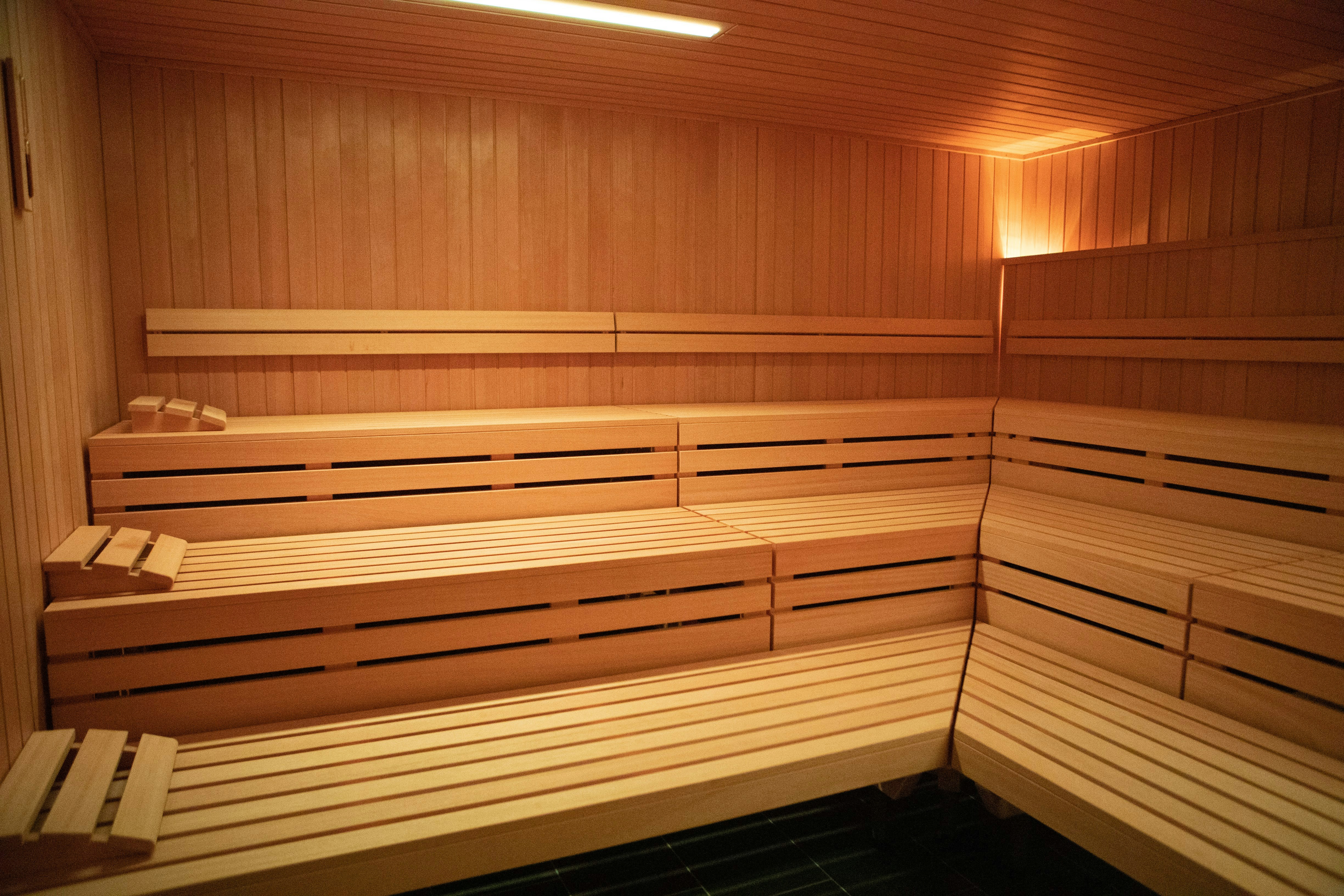Imagine this: you’ve just left the sauna after a session, feeling refreshed and rejuvenated. What if that blissful heat was also working behind the scenes, helping to enhance your metabolism, boost muscle recovery, and even slow the aging process? The science exploring these benefits is developing quickly, and the findings are fascinating.
Regular sauna use can increase hGH levels by up to 200%
Whether fitting in a quick sauna session while your children take swimming lessons or indulging in some ‘me-time’ over the weekend, understanding the protocols and benefits can help you make the most of this time-honoured tradition.

Understanding Human Growth Hormone (HGH)
Human Growth Hormone (HGH) plays a pivotal role in growth, body composition, cell repair, and metabolism. But did you know that engaging in regular sauna sessions can significantly stimulate the production of this crucial hormone? Emerging research sheds light on how heat shock proteins (HSPs) can unlock numerous health benefits, including enhancing HGH levels.
HGH is synthesised and secreted by the pituitary gland. It promotes physical growth, muscle mass, and fat metabolism, which are essential for maintaining a healthy and active lifestyle. As we age, HGH levels naturally decline. This reduction can contribute to decreased muscle mass, increased body fat, and slower recovery times. Therefore, finding ways to bolster HGH production is of immense interest, particularly for those keen on longevity and optimal health.
Sauna sessions can improve muscle recovery by 30%
One promising avenue is through heat exposure, such as that experienced in saunas. When exposed to elevated temperatures, your body initiates a stress response, triggering the production of heat shock proteins (HSPs). These molecular chaperones protect cells and maintain protein integrity under stress conditions. Research indicates that HSPs can significantly augment HGH levels.
Essentially, saunas create a conducive environment for your body to ramp up its natural production of HGH, aided by HSPs. As you sit and sweat in the sauna, these proteins repair damaged tissues, promote cell regeneration, and enhance overall metabolic functions. The result is a rejuvenated body with improved growth hormone levels, opening doors to better muscle health, faster recovery, and reduced fat accumulation.

The Role of Heat Shock Proteins in HGH Production
Heat shock proteins (HSPs) are essential in human growth hormone (HGH) production. When your body is exposed to stressful conditions—such as high temperatures in a sauna—HSPs are upregulated or increased in response. This process is your body’s way of protecting itself from the adverse effects of stress, particularly by aiding in repairing and refolding damaged proteins.
One of the intriguing aspects of HSPs is their ability to enhance the secretion of HGH. Growth hormone is crucial for various bodily functions, including tissue repair, muscle growth, metabolism, and overall physical performance. HSPs help ensure proteins within your cells function correctly, indirectly supporting the optimal functioning of your endocrine system, including the pituitary gland that secretes HGH.
Using a sauna 4-7 times per week can lower the risk of Alzheimer’s disease by 65%
Recent studies have shown that regular exposure to heat stress through saunas can significantly boost HGH levels. This is primarily due to the increased release of HSPs, which act as biochemical signals encouraging greater synthesis of growth hormone. This increase supports muscle recovery and growth and aids in weight loss, improved energy levels, and enhanced overall well-being.
Furthermore, HSPs have chaperone functions, meaning they assist in properly folding newly synthesized proteins and refolding misfolded proteins. This activity is vital because it prevents cellular damage and promotes cellular homeostasis. By maintaining the health of your cells, HSPs also ensure that the HGH produced is more effective and functional, enhancing its numerous health benefits.
In conclusion, by engaging in regular sauna sessions, you are effectively leveraging the powerful benefits of HSPs to stimulate the enhanced production of HGH. This can lead to a cascade of positive health effects, making saunas a relaxing activity and a strategic practice for boosting overall health.

Sauna Protocols: Best Practices for Boosting HGH Levels
Drawing inspiration from the renowned Huberman Lab protocols, one can further refine their sauna regimen to amplify the health benefits and boost HGH levels. Dr. Andrew Huberman, a neurobiologist at Stanford University, has extensively discussed the optimal practices for leveraging sauna sessions. His protocol merges scientific rigour with practical application, making it accessible and effective for individuals seeking tangible health improvements.
Huberman advises starting with multiple sauna sessions per week, specifically aiming for four to seven times, depending on one’s schedule and tolerance. Each session should last between 20 to 30 minutes at a temperature range of 80°C to 100°C (176°F to 212°F). Interestingly, this high temperature is pivotal for inducing significant heat stress, which triggers the production of HSPs and thereby supports the natural increase of HGH levels.
Sauna use can enhance endurance performance by 32%
What sets the Huberman protocol apart is the emphasis on consistency and gradual adaptation. Initially, new users might find the high temperatures and prolonged durations challenging. Therefore, starting with lower temperatures and shorter sessions, progressively working towards the full protocol is encouraged. This gradual increase helps the body acclimate, reducing the risk of overheating or other adverse effects.
Incorporate Cold Exposure: Huberman also suggests pairing sauna sessions with short bursts of cold exposure. This can be achieved through a cold shower, ice bath, or even stepping outside in cooler weather. The abrupt temperature change fosters cardiovascular resilience, enhances recovery, and further stimulates the metabolic processes initiated by the sauna session.
Timing and Frequency: For optimal results, Huberman’s strategy involves spreading sauna sessions evenly throughout the week rather than clustering them together. This frequency ensures a steady activation of heat shock proteins without overwhelming the body’s systems. Additionally, undergoing sauna sessions post-exercise can amplify the benefits, as the body is already in a heightened state of metabolic activity.
Hydration and Electrolytes: In line with the hydration advice, the Huberman protocol underscores the importance of maintaining electrolyte balance. This can be done by consuming beverages rich in electrolytes or adding a pinch of sea salt to water. This practice helps counter electrolyte loss during intense sweating, ensuring that the body remains properly hydrated and minerals are replenished.
Mindfulness and Relaxation: Lastly, Huberman touches upon the holistic nature of sauna sessions. He advocates for incorporating mindfulness and relaxation techniques during the sauna. This could be deep breathing exercises, meditation, or simply allowing oneself to unwind and disconnect from daily stressors. Such practices enhance the sauna’s therapeutic impact, fostering mental well-being alongside the physical benefits.
Adhering to these structured sauna protocols can provide remarkable health benefits. By systematically exposing the body to controlled heat stress and complementing it with relaxation and cold exposure techniques, one can unlock the potent health-promoting effects of HSPs and elevated HGH levels, as endorsed by the Huberman lab.

Personal Experiences: How Saunas Have Improved My Health
Realistically, I can’t get into the sauna multiple times per week. So, I know I am not getting the benefit I could be. Maybe one day I can justify one of those home saunas!
In the meantime, I am getting in where I can—either on weekends when I don’t have the kids or, when I do, I can sometimes sneak away into the pool complex sauna while the kids are having their swimming lessons.
By seizing these moments, I’m carving out time for self-care and betting on long-term gains. During my 20-minute escapes, while the kids swim and splash nearby, I’m enamoured by the idea that something as simple as heat can catalyse profound change. It’s an investment in vitality, one session at a time. And while scientific data on the long-term effects of increased hGH levels through sauna use continues to evolve, the immediate benefits I experience are unmistakable—a clearer mind, relaxed muscles, and a revitalised spirit.

